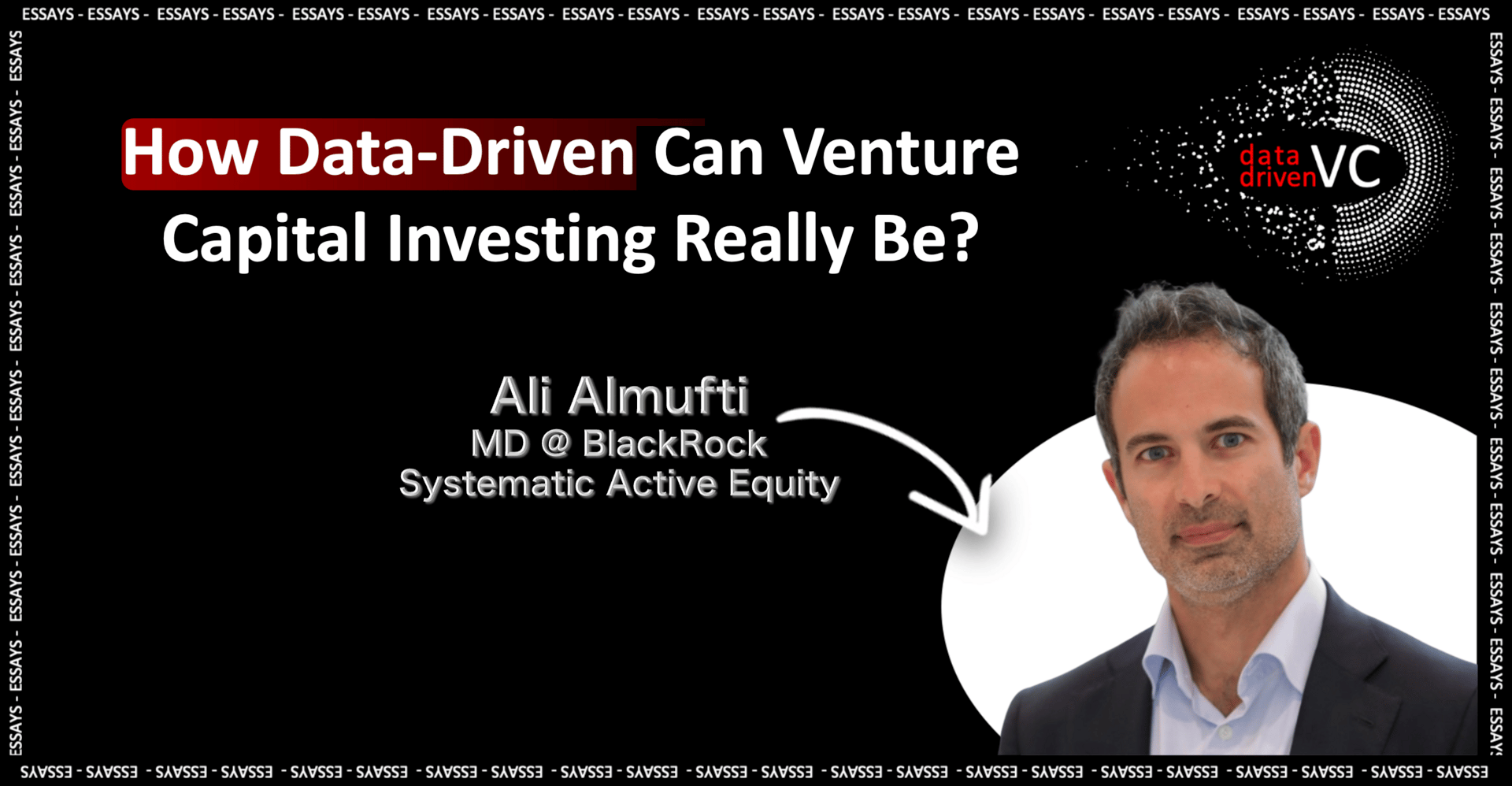👋 Hi, I’m Andre and welcome to my newsletter Data-Driven VC which is all about becoming a better investor with Data & AI. Join 32,120 thought leaders from VCs like a16z, Accel, Index, Sequoia, and more to understand how startup investing becomes more data-driven, why it matters, and what it means for you.
Brought to you by Affinity – Due Diligence 2.0: Strategies for the AI Era
When AI startups reach billion-dollar valuations in months and market conditions can shift overnight, traditional due diligence approaches are pushed to their limits. VCs are challenged to validate complex technologies, assess business model sustainability, and pick out the highest quality deals amid the hype.Join this webinar to see how NEA is evolving their due diligence process and the investments they're making to support the next generation of innovative companies.
I’m excited to have Ali Almufti, MD at BlackRock Systematic Active Equity and one of the thought leaders of our community contribute a guest post today. With almost two decades of experience driving data-driven innovation at BlackRock, Ali reflects on the question of how data driven VC (and equity investing more broadly) can actually be.
For those who’d like to learn more and ask your questions to Ali directly, make sure to join his keynote at our upcoming Virtual DDVC Summit 10-12th March.
Let’s dive in!
Private equity is like the pre-1970s public market
Imagine a world where venture capital investment decisions are as precise and data-driven as those in public equity markets. As someone who began their career in quantitative public equity investing, I believe there's a wealth of knowledge to be transferred to venture investing.
Over the past few decades, quantitative investing has evolved dramatically, incorporating alternative datasets, unstructured text insights through natural language processing, large language models (LLMs), and sophisticated machine learning frameworks for predictions.
We can look back at the early days of active public equity investing to identify transferable insights. Our recent article published in the Journal of Portfolio management explores the history of public markets and highlights similarities with current trends in private markets:
Systematic or quantitative active investing has also improved the environment for investors through better risk management, portfolio construction, and understanding of active management components. These developments have significantly improved the landscape for public market investors by increasing competition, popularizing performance benchmarks, and innovating new methods to extract alpha.
Today, private equity is like the pre-1970s public market: an active, high barrier-to-entry asset class ripe for disruption. The private equity market has grown from $716 billion in total assets under management in December 2000 to $15.3 trillion as of September 2023, according to Preqin. The largest category is buyout at $4 trillion, followed by venture capital and growth equity at $1.8 trillion and $1.4 trillion, respectively.
Although quantitative investing has benefited public equity markets, many people associate it with high-frequency trading and struggle to see its relevance to venture capital.
While technical insights used for intraday trading may not apply, quantitative investing spans various horizons, from three to eighteen months and beyond. Public equity quants can forecast fundamentals, such as whether increased internet search activity leads to higher sales. This empirical confirmation of underlying economic principles gives investors confidence in allocating capital based on these insights.
In essence, some quants aim to systematize a fundamental investment thought process. They ask: What drives a company's success or outperformance? How does it compare to peers and historical performance? What data can provide insights into these key components? Can hypotheses be tested empirically?



